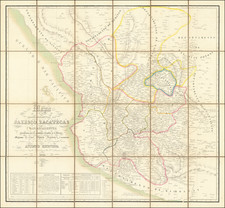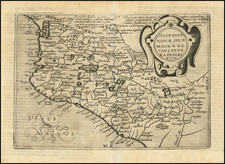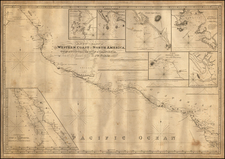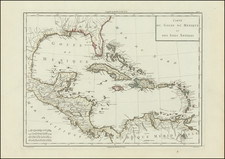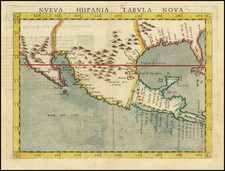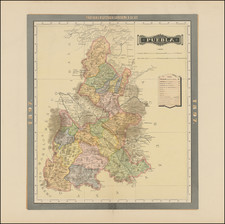Aztec Calendar Stone
An early 19th-century pencil tracing of the iconic Aztec Calendar stone, by Capt. William H. Shippard. This famous object, also known as the Sun Stone (Piedra del Sol) or the Stone of the Five Eras, was extracted from the ground in 1790 near the location of the Aztec Templo Mayor in Mexico City. The Sun Stone itself measures 3.5 meters in diameter and is nearly a meter thick. It is currently the centerpiece of the Museo Nacional de Antropologia in Mexico City.
The calendar stone is essential for understanding the importance of astronomy and calendar systems in Aztec society, reflecting their sophisticated knowledge of these fields. There are several interpretations of the carved symbols, which record Mexica (Aztec) cosmogony and chronology. The deity at centre may be the Sun god, surrounded by four previous eras (boxes) and concentric circles of date glyphs.
According to a pencil note on the sheet itself, this tracing was made by Shippard in the British Museum from a copy of Alexander von Humboldt's published work, Atlas Pittoresque du voyage: Vues des Cordillères (Paris 1810), perhaps as preparation for a watercolor.
Calendrier Mexicain
See De Humboldt...
De Humboldt, Atlas pittoresque, British Museum, 10 June 1844
William Henry Shippard's Mexican Paintings
William H. Shippard (1803-1865) was a pioneering 19th-century British museologist - an unsung progenitor of modern-day museum anthropology. While he is chiefly remembered as a friend of George Catlin, Shippard's profound interest in the ancient civilizations of Mexico connects him with a cohort of British contemporaries that include Lord Kingsborough and the showman William Bullock. Shippard's fascination with Mesoamerica propelled him to amass a significant collection of visual material derived from Aztec codices which he copied himself. A figure of some intrigue and scholarly ambition, Shippard endeavored to establish the Museum of Mankind in London, which seems to have evolved from his deep interest in early Mexican cultures. Although the museum did not come to fruition, Shippard's original artwork, mainly pen and ink drawings enriched with vibrant hand coloring, based on Mexican codices held in European libraries and collections, remains a valuable historical source, particularly for understanding the allure of Mexican antiquity within early 19th-century British collecting circles.
Capt. William H. Shippard, a friend of George Catlin and an avid watercolorist and museologist, was also a pioneering British Mesoamericanist. Shippard appears in British newspaper notices from the 1840s as a London-based lecturer who spoke about Native Americans and Mexican antiquities. We know he was a friend of George Catlin, and that he was involved in attempts to organize early London museum exhibitions of Mexican antiquities. In the latter efforts Shippard would seem to coincide with a group of like minded prominent English collectors interested in Mexican topics active during the 1820s and 1830s, including Lord Kingsborough and the bibliomaniac Sir Thomas Phillipps, among others. He seems to have been an armchair anthropologist and would-be museum founder, whose ambitious ideas for a London-based museum never got off the ground - at least not beyond the prospectus-printing stage. Certain aspects of Shippard's career are akin to William Bullock, the showman and connoisseur of Mexican antiquities who actually did travel to Mexico. Bullock published a notable book about his Mexican travels, and achieved a level of recognition in his day as the empresario of London's Egyptian Hall, wherein he thrilled large London audiences with his elaborate exhibitions of exotica, including Mexican items.









